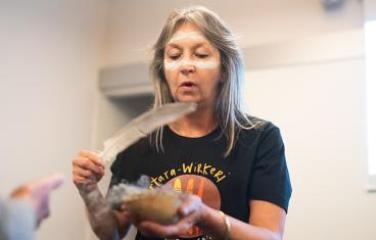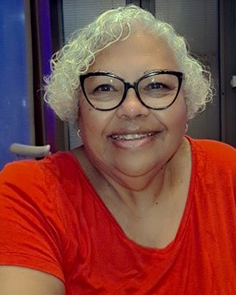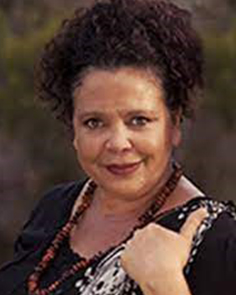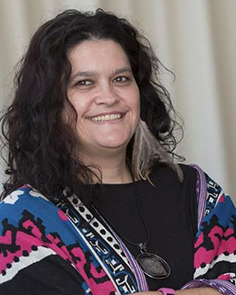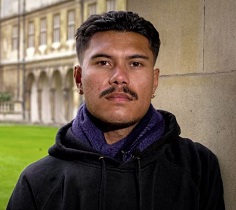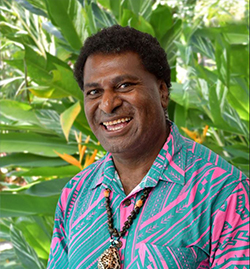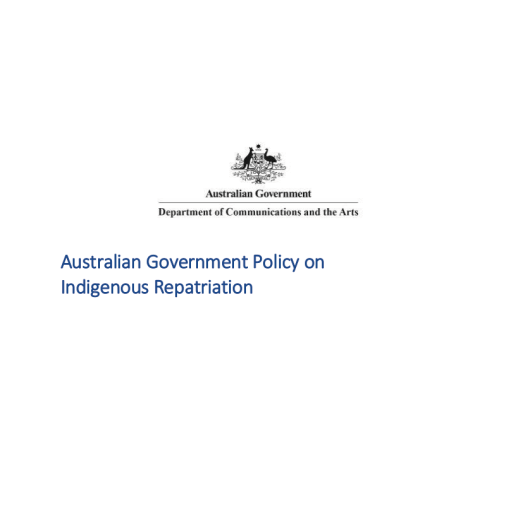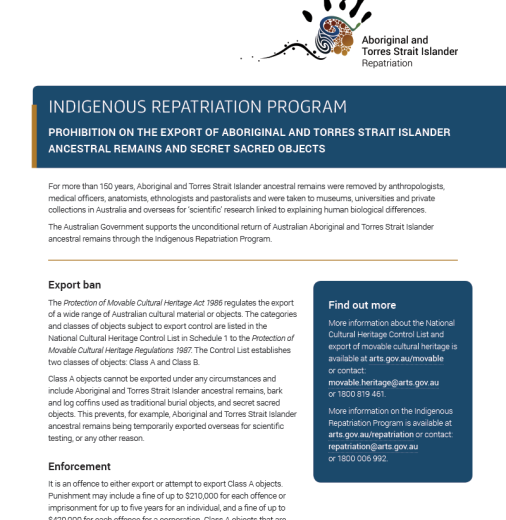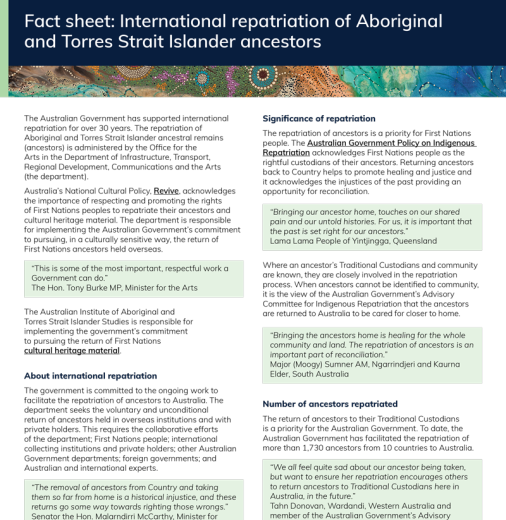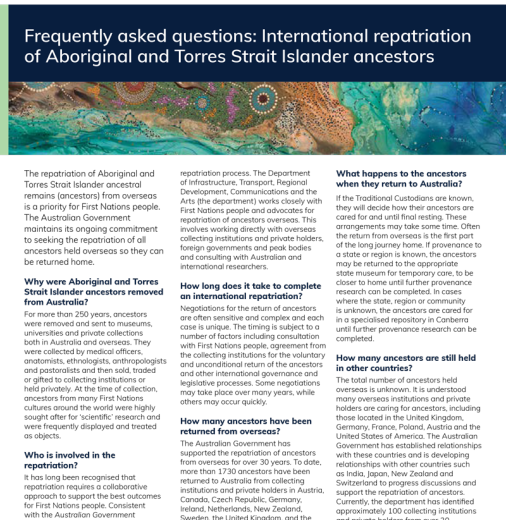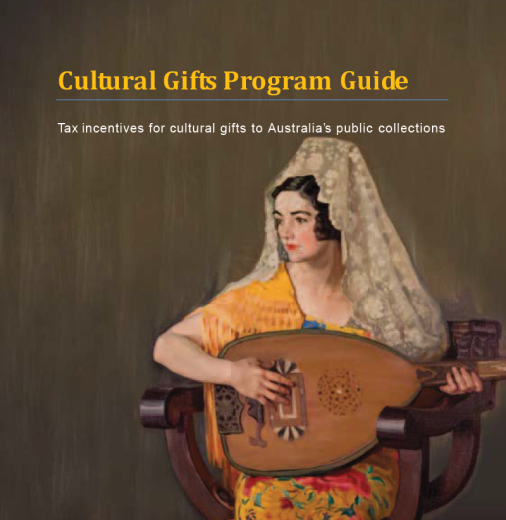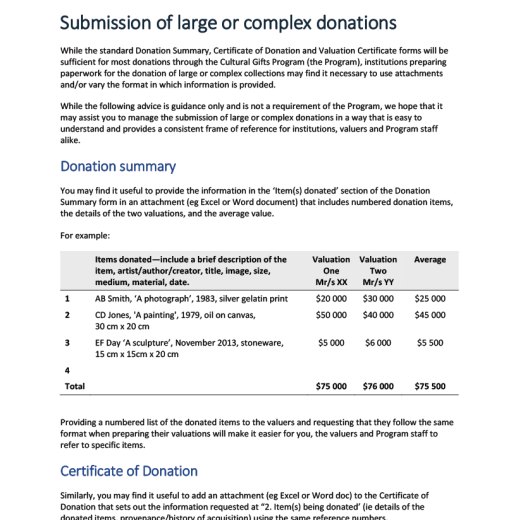National Cultural Heritage Committee
The National Cultural Heritage Committee is made up of ten people with expertise in Australia's cultural heritage.
The Committee is responsible for:
- assessing export permit applications and making recommendations to the Minister for the Arts about if a permit should be granted
- assessing funding applications from the National Cultural Heritage Account
- assessing expert examiner applications
- advising the Minister for the Arts about issues related to cultural heritage.
The Minister for the Arts appoints the Committee under the Protection of Movable Cultural Heritage Act 1986. Members serve for terms of up to four years. They can be reappointed.
The Committee is made up of:
- four people from different collecting institutions
- an Aboriginal or Torres Strait Islander nominated by the Minister for Indigenous Affairs
- an individual nominated by Universities Australia
- four people with experience relevant to the cultural heritage of Australia.
The current members are:
- Professor Martin Gibbs—Professor of Australian Archaeology, University of New England, Armidale
- Mr Simon Elliott—Deputy Director, Collection and Exhibitions, Queensland Art Gallery
- Ms Jane Stewart—Manager of Engagement, State Libraries and Archives Tasmania
- Dr Tim Sullivan—Consultant, museums and heritage
- Ms Louise Tegart—Director, Art Gallery of Ballarat, Victoria
- Dr Geraldine Mate—Principal Curator, History, Industry and Technology, Queensland Museum
- Dr Stephen Gilchrist—Senior Lecturer, School of Indigenous Studies, University of Western Australia
- Dr Zoe Rimmer—Assistant Director, Aboriginal Heritage Tasmania, Department of National Resources and Environment Tasmania
- Ms Tina Baum—Senior Curator, First Nations Art, National Gallery of Australia
Advisory Committee for Indigenous Repatriation
The Advisory Committee for Indigenous Repatriation provides advice to the Australian Government on repatriation matters.
Advisory Committee for Indigenous Repatriation
The Advisory Committee for Indigenous Repatriation (the Committee) is an all-Indigenous committee. The Minister for the Arts appoints members of the Committee to advise on policy and program issues related to the repatriation of Aboriginal and Torres Strait Islander ancestral remains (ancestors) and secret sacred objects (objects) held in Australian collecting institutions and ancestors and associated material held overseas.
Hear about repatriation
Committee role
The Committee provides strategic advice to the Australian Government on issues directly affecting Indigenous repatriation, including:
- The Australian Government's Indigenous Repatriation Policy.
- The repatriation of ancestors and objects that have limited provenance and no identified community of origin.
- Repatriation matters that affect all or many communities (as each community advises on its own cultural protocols for ancestors and objects).
- Any other relevant matters.
The Committee also promotes awareness and understanding of the repatriation of ancestors and objects.
Members
Committee members must be of Aboriginal and/or Torres Strait Islander descent. In addition, members must have:
- an understanding of Aboriginal/Torres Strait Islander culture and traditions
- experience in Indigenous repatriation and/or cultural heritage work.
Current Committee members are:
Indigenous Repatriation
The Australian Government supports the repatriation of Aboriginal and Torres Strait Islander ancestral remains (ancestors) and secret sacred objects (objects) which contributes to healing and reconciliation.

We facilitate the voluntary and unconditional return of ancestors held in overseas collections and with private holders; and support the safe return of ancestors and objects held in eight major Australian museums to their Traditional Custodians, contributing to healing and reconciliation.
For more than 250 years ancestors and objects were removed from their communities and placed in museums, universities and private collections in Australia and overseas. During the 19th and 20th centuries, medical officers, anatomists, ethnologists, anthropologists, and pastoralists collected ancestors for 'scientific' research linked to explaining human biological differences. While others removed ancestors and objects for the purpose of trade or sale where they were frequently placed on display and exhibited as curiosities in collecting institutions.
It has long been recognised that repatriation requires a collaborative approach to support the best outcomes for First Nations people. We work with all stakeholders, including Aboriginal and Torres Strait Islander communities, other Australian Government agencies, Australian museums, state, territory and local governments, researchers and overseas governments, collecting institutions and private holders.
Australian Government Policy on Indigenous Repatriation
The Australian Government Policy on Indigenous Repatriation was established in 2011. In 2016, it was updated to reflect the change in Department name.
Australian Government Indigenous Repatriation Policy—September 2016
Other Australian Government Repatriation Programs
The Australian Institute of Aboriginal and Torres Strait Islander Studies (AIATSIS)
AIATSIS leads the Return of Cultural Heritage (RoCH) program to return Aboriginal and Torres Strait Islander cultural heritage material held overseas to Australia. In May 2024, the Australian Government announced ongoing funding for the RoCH program. For more information on the RoCH program please visit the AIATSIS website at https://aiatsis.gov.au.
Department of Veterans' Affairs
The Department of Veterans' Affairs is responsible for the policy on the repatriation of Australian soldiers buried overseas. To find out more, visit the Department of Veterans Affairs website at https://www.dva.gov.au.
Contact
Email: repatriation@arts.gov.au.
Phone: 1800 006 992
Documents
Participating institutions
Enriching Australia's public collections
The Cultural Gifts Program (CGP) helps make important cultural items accessible to the Australian public by providing incentives for donors to donate art and cultural property to Australia's public collecting institutions.
Public collecting institutions must be endorsed as a Deductible Gift Recipient (DGR) on the basis of being a public art gallery, museum or library (including archives) by the Australian Taxation Office (ATO). Institutions and donors are encouraged to familiarise themselves with the Cultural Gifts Program Guide prior to commencing an application.
Roles and responsibilities
The process of providing a donor with a tax deduction for a donation made under the Cultural Gifts Program begins when a participating institution accepts the donation into its collection.
The recipient institution is responsible for:
- Ensuring the donation meets the institution's collection policy, including undertaking due diligence in relation to ensuring it complies with all legal requirements.
- Accepting the donation into its permanent collection.
- The donor and institution must complete a Certificate of Donation. For large donations, please complete the large donations template.
- Assisting donors in obtaining at least two valuations for the donation from CGP approved valuers.
- Valuations will not be accepted under the CGP unless the valuer is approved for the relevant class. For example, a valuer approved for Australian paintings after 1950 would not be eligible to value an Australian painting dated 1890.
- Submitting the required documentation to the department using the online system. The Certificate of Donation and Valuation Certificates for donations made under the CGP must be submitted through the department's online submission portal: Start now. For collections of four or more items please upload a complete list itemising both valuations using the breakdown of items template.
- The department will notify the donor and the institution upon receipt of the application.
- The department will send the donor a letter once the application is finalised.
Acknowledging Australian Government support
Recipient institutions must acknowledge the Cultural Gifts Program when referring to donated items on materials including but not limited to promotional materials, websites, social media, invitations and signage.
The standard acknowledgement for a donation is:
- Donated through the Australian Government's Cultural Gifts Program.
Acceptable variations include:
- Donated through the Australian Government's Cultural Gifts Program by [donor's name].
- Donated through the Australian Government's Cultural Gifts Program by [donor's name] in memory of [name].
- Donated through the Australian Government's Cultural Gifts Program in memory of [name].
Deaccessioning
Donations should only be accepted on the basis that they will form part of an institution's permanent collection. However, the department acknowledges changes in collection policies may occasionally result in the need to deaccession items.
If items are removed from a collection, this should be done in accordance with the institution's deaccessioning policy. Donations under the CGP should not be returned to the donor as the donor has already received the benefit of the tax deduction for the gift.
Frequently asked questions
- Visit the frequently asked questions page for more information.
Cultural and creative activity boosts the economy

Aboriginal and Torres Strait Islander ancestors returned home from the United Kingdom
